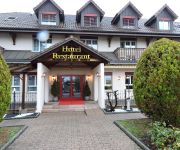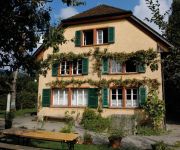Facts and Data
Webpages:
Official Unesco Page
Basis Data:
Unesco World heritage since: 2011
Size of heritage: 274 ha
- Buffer zone: 3,961 ha
Coordinates:
Longitude: 8,208°
Latitude: 47,278°
Summary
This serial property of 111 small individual sites encompasses the remains of prehistoric pile-dwelling (or stilt house) settlements in and around the Alps built from around 5000 to 500 B.C. on the edges of lakes, rivers or wetlands. Excavations, only conducted in some of the sites, have yielded evidence that provides insight into life in prehistoric times during the Neolithic and Bronze Age in Alpine Europe and the way communities interacted with their environment. Fifty-six of the sites are located in Switzerland. The settlements are a unique group of exceptionally well-preserved and culturally rich archaeological sites, which constitute one of the most important sources for the study of early agrarian societies in the region.
Location on Map
Show bigger map on Openstreetmap
Prehistoric Pile dwellings around the Alps
The Prehistoric Pile dwellings around the Alps is a UNESCO World Heritage site located in Austria. This site consists of a series of prehistoric pile dwellings that were constructed on the shores of lakes and rivers in the Alpine region. These dwellings provide valuable insights into the lives of prehistoric communities and their relationship with the environment.
History
The construction of pile dwellings began around 5000 BC and continued until the Bronze Age, around 500 BC. These dwellings were built by driving wooden piles into the lake or riverbeds and then constructing platforms on top of them. The platforms were made of timber and supported by additional piles. The dwellings were typically circular or rectangular in shape and were accessed by wooden walkways.
The prehistoric communities that inhabited these dwellings were primarily engaged in agriculture, fishing, and hunting. They cultivated crops such as wheat, barley, and flax, and raised livestock including cattle, sheep, and pigs. Fishing and hunting also played a significant role in their subsistence. The dwellings provided protection from predators and floods, while also offering easy access to water resources.
Over time, these pile dwellings evolved in terms of construction techniques and architectural styles. The dwellings became more sophisticated, with the introduction of stone tools and pottery. The communities also developed trade networks, exchanging goods with neighboring settlements. The pile dwellings were abandoned during the Iron Age, as communities shifted to more permanent settlements on dry land.
Current State
Today, the Prehistoric Pile dwellings around the Alps are a remarkable archaeological site that offers a glimpse into the lives of prehistoric communities. The site spans across six countries, including Austria, Switzerland, France, Germany, Italy, and Slovenia. In Austria, there are several locations where these pile dwellings can be found, including Lake Neusiedl, Lake Mondsee, and Lake Attersee.
The preservation of these pile dwellings is of utmost importance to ensure their long-term survival. Efforts have been made to protect and conserve the remains of these dwellings. The sites are carefully excavated and studied by archaeologists to gain a better understanding of prehistoric life. The remains are then preserved and displayed in museums, allowing visitors to learn about the history and significance of these dwellings.
The Prehistoric Pile dwellings around the Alps have been recognized as a UNESCO World Heritage site since 2011. This designation highlights the universal value of these dwellings and the need to protect and preserve them for future generations. The site serves as a reminder of the ingenuity and adaptability of prehistoric communities and their close relationship with the natural environment.
Visiting the Prehistoric Pile dwellings around the Alps provides a unique opportunity to step back in time and explore the lives of our ancestors. It offers a fascinating insight into the development of human civilization and the challenges faced by early communities. The site serves as a testament to the rich cultural heritage of the Alpine region and its importance in shaping our understanding of prehistoric life.
Hotels and places to stay
Seerose Resort & Spa
Glashaus Hotel
Hotel Restaurant Eichberg
Villmergen Swiss Quality Hotel
Marco Polo Business Apartments
Schönau
Youth Hostel Beinwil am See
Gasthof Adler
Videos from the area
Videos provided by Youtube are under the copyright of their owners.




















